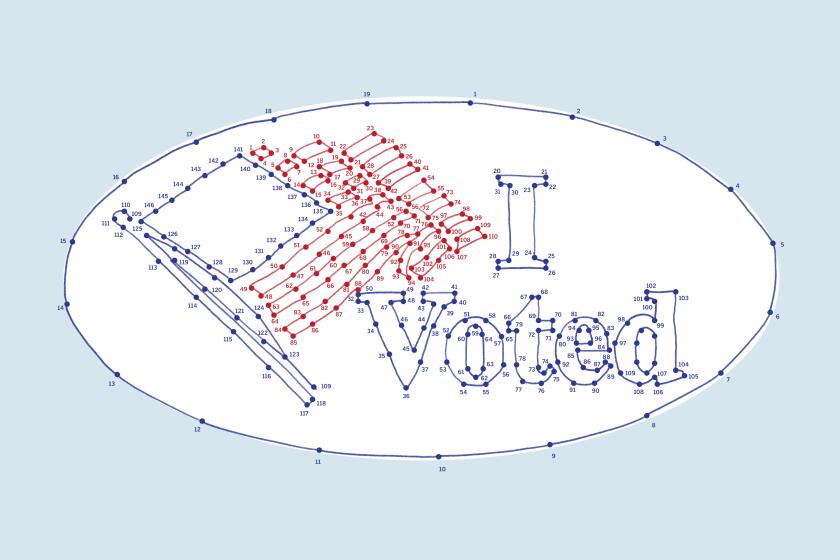Tie Our Spending Limit to State’s Economic Growth
Gov. George Deukmejian’s decision to invoke the state spending limit rather than give more funds to schools would appear to signal the beginning of the battle over the future of the 1979 Gann measure. But it is an unnecessary battle. Beyond the rhetoric, an attractive consensus is available for all but a small number of tax revolt die-hards. Let’s hope that the governor’s line is drawn in sand, not cast in stone.
Deukmejian proposes to credit $700 million to taxpayers--$49 single, $98 joint--because, he says, the state is over the spending limit. True, the state is over the limit. But schools, community colleges, counties and cities are mostly under.
Ever since Proposition 13, schools and local government have had to rely almost entirely on the state to raise and allocate their revenue. It is not that the state now has too much revenue; rather, the revenue is badly distributed between state and local government.
State transfers to schools, counties and cities are not only specifically provided for in article 13-B of the California Constitution, they’re also part of the intentional design of the spending limit measure. Such block grant financing has been part of the explicit agenda of the fiscal conservatives who wrote the Gann measure, including then-Sen. Deukmejian, so it is all the more puzzling why he does not take advantage of this opportunity to transfer the money to schools.
Should this money be returned to taxpayers because it is a one-time windfall due to federal tax reform and cannot be depended on in the future? No, because there are plenty of one-time only expenditures--billions in deferred maintenance and instructional equipment--which could improve our schools and recycle quickly back to our local economies.
Is his refusal to spend the money a result of his increasingly personal rivalry with state Supt. of Public Instruction Bill Honig? Let’s hope not. With the Legislature already so discredited by its partisan wrangling, the governor is not well-advised to abandon his traditional above-the-fray stance, despite his apparent dislike for Honig.
Part of the answer may lie with the lingering political psychology of the tax revolt. Like most responsible fiscal conservatives, Deukmejian opposed Proposition 13 in 1978 as bad tax policy, failing to see it as a conservative watershed. Once burned, twice shy: As governor, he has approached fiscal issues with the excess zeal of a late convert, casting the time-worn epithet of “big spenders” at advocates for a stronger public sector, including business-based transportation supporters as well as traditional school, health and senior citizen constituencies.
By proposing the tax credit, he must believe that it still plays well in Pomona to wave tax cuts at the public. While recent polls do not, as some maintain, demonstrate a public inclination for paying more taxes, they indicate no interest in further tax cutting and some strong interest in strengthening many vital services. Political research conducted with voters right after the governor’s announcement found little enthusiasm for the tax rebate; it did not amount to much compared to what it could buy for education.
The issue is now joined for this year’s budget. The Democrats will try to demonstrate that $700 million can be put to good use under the limit, the Republicans will presumably hold out for some form of tax credit. But beyond the budget, the more significant aspect is whether this skirmish signals a showdown over next year’s proposed initiative to change the Gann limit.
It shouldn’t. Like any piece of 1970s’ social legislation, the limit is sorely in need of amendment. Its inflation-only index does not permit the public sector to stay abreast of economic growth. Its population definition does not fully account for growth in the school-age population. It counts reserves for a rainy day as current spending under the limit. Its definition of fees has generated intense controversy. And, by next year, the whole state will be fully at the limit. Neither state nor local government will be able to spend current revenues, and cuts in current service levels will be required.
Paul Gann himself has recognized the unworkability of the limit by filing, then pulling back, an initiative to declare gas taxes and sales taxes on gasoline as “user fees” so then only highway building can avoid the limit. Howard Jarvis must be turning over in his grave at the specter of his co-crusader calling sales taxes “fees” in proposing an end run around his own limit for the highway lobby.
As the movement to amend the limit rapidly gains steam, key leaders in the business community are caught between the governor and their impatience with the condition of our infrastructure. Rigorous adherence to the current limit will be appreciated by only the handful of “slash the state” ideologues for whom public spending is bad by nature. By prematurely invoking the limit the governor is not making it easier for his business community allies to search for a rational solution.
And such a solution is nearly at hand. The proposed economic growth amendment, which is expected for the June, 1988, ballot, will be in fact the type of modest, rational change that should be broadly embraced by all those who understand the need for avoiding damaging cuts in public spending. For those politicians concerned about excessive spending or who are still afraid of being labeled big spenders, there’s an easy answer: A spending limit based on economic growth represents the return to what Gov. Ronald Reagan proposed in 1973. That measure was rejected by voters as too restrictive. Fifteen years later, and 10 years after the tax revolt, it should form an acceptable basis for a new consensus on the direction of public spending.
More to Read
Get the L.A. Times Politics newsletter
Deeply reported insights into legislation, politics and policy from Sacramento, Washington and beyond. In your inbox three times per week.
You may occasionally receive promotional content from the Los Angeles Times.










